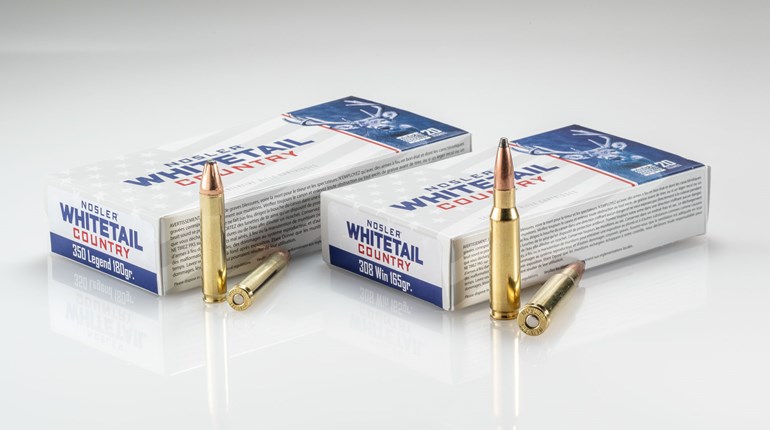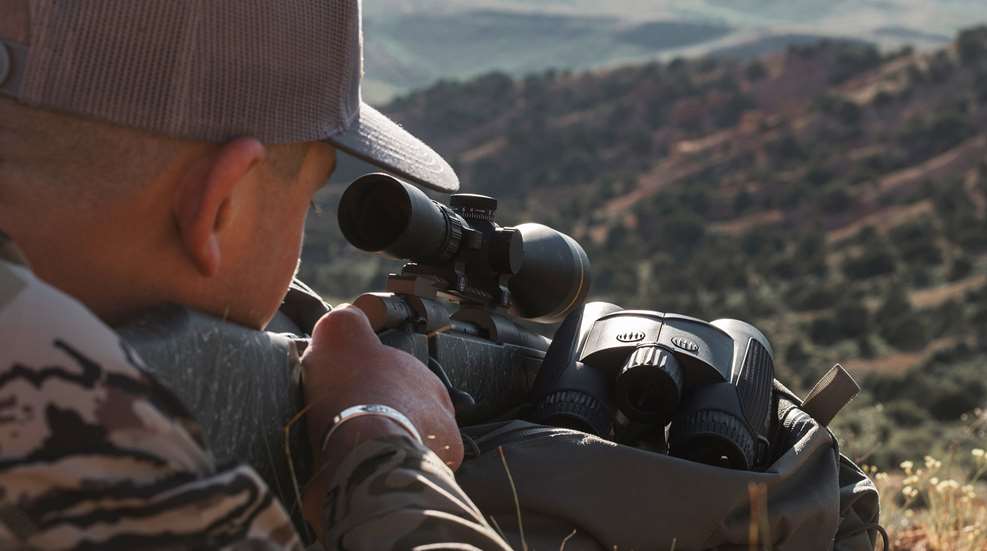
The leopard came into the tree in that mercurial manner unique to that species; though the sight of the cat was exhilarating, I also knew we were losing the light fast. Sitting next to me in the blind, professional hunter Tanya Blake was struggling to verify that we had a tom leopard in the tree, and not the female which had hit the same bait. Nearing a panic, I told Tanya that we had just a couple minutes before the lack of light would make shot placement impossible.
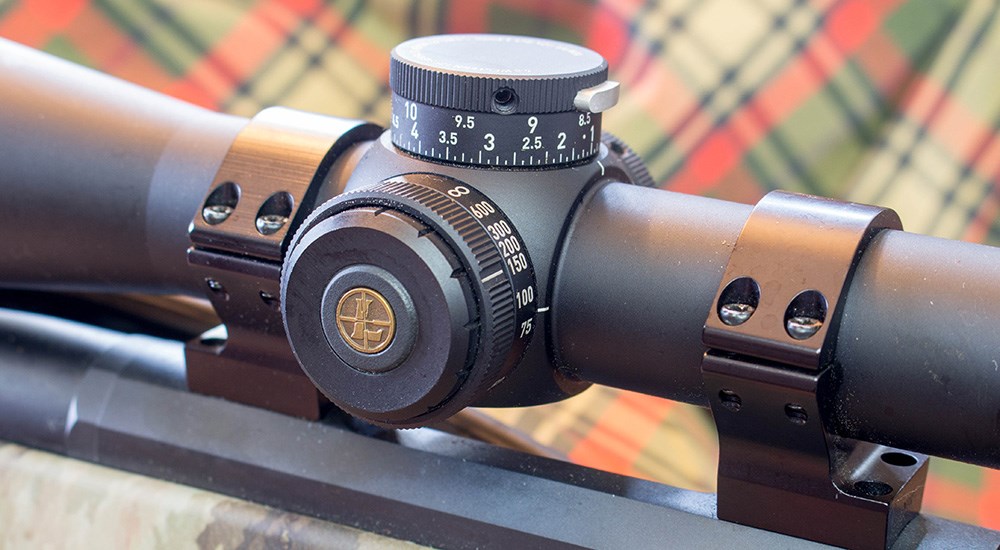 A Leupold VX-6HD 3-18x44mm with a TMAO illuminated reticle.
A Leupold VX-6HD 3-18x44mm with a TMAO illuminated reticle.
The scope was surely bright enough—Leupold’s VX-5HD 2-10x42mm with its 30mm maintube transmits all sorts of light—but the grainy half-light of dusk was making the crosshairs all but disappear. I pressed the button on the left side of the adjustment housing, turning on the FireDot: a fiber-optic illuminated dot at the crosshair. I had it set to the dimmest setting, so as not to upset my vision, and the instant Tanya gave me the green light, I put that dot just behind the cat’s shoulder, and knocked him out of the tree. Being completely honest, were it not for the FireDot in that reticle, I probably wouldn’t have taken the shot.
Illuminated riflescope reticles aren’t exactly a new thing, but it seems that few hunters readily take advantage of the technology. There are several situations in which these reticles shine—pun fully intended—and I’ve found that when you need an illuminated reticle, you really need it. Let’s take a look at some different ideas regarding illumination, and why you might consider having your next scope purchase include an illuminated reticle.
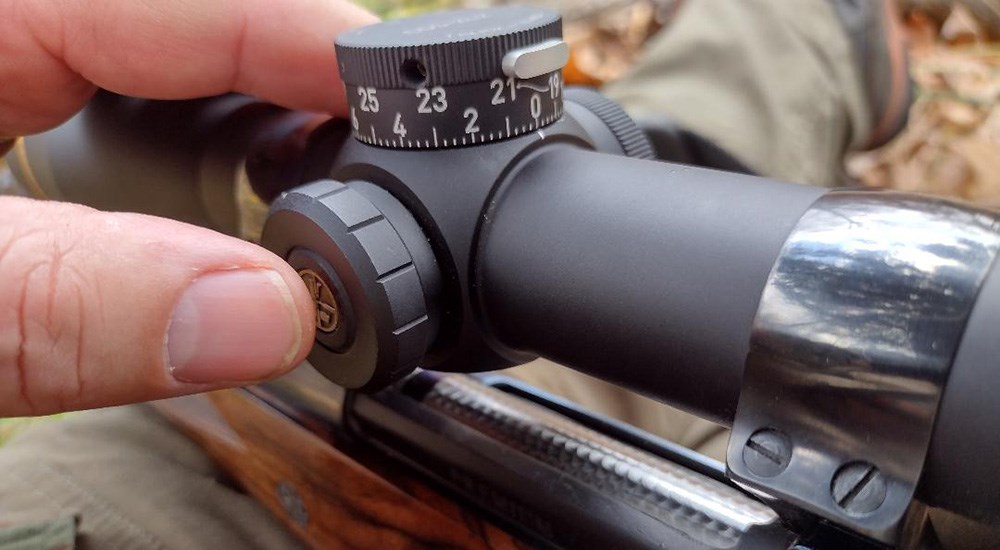 A small button on the left side of the housing, inside the focus adjustment engages the illumination.
A small button on the left side of the housing, inside the focus adjustment engages the illumination.
First, the legality of using an illuminated reticle has been a hot topic, but it seems that most states that had declared them illegal in the past have changed the wording of their laws to allow an illuminated reticle, but not a product which projects a light or laser of any sort onto the game animal. But, before you get the cart before the horse, verify that an illuminated reticle is legal for any area you intend to hunt. In some instances, simply removing the battery can put the scope in compliance, but it is certainly better to be safe than sorry.
Where exactly does an illuminated reticle show its worth most? Well, it makes perfect sense for the hunter who routinely hunts species which tend to move at first and last light. Whitetail hunters can surely benefit from a lighted reticle, even in its simplest form, as wary old bucks will sometimes only offer a shot at dawn or dusk. Predator hunters would also do well with a bit of illumination, as coyotes and foxes are often taken in low-light situations. And those who are serious about hunting an African leopard would do very well equip themselves with an illuminated reticle in their chosen scope—it truly made all the difference on my hunt.
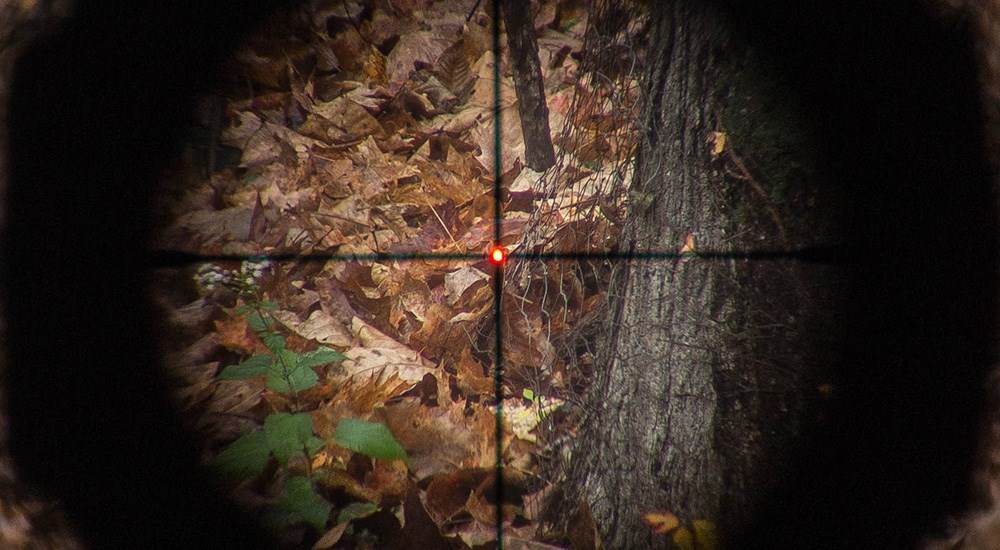 Leupold’s FireDot is a simple, yet very effective tool, which can sometimes make or break your hunt.
Leupold’s FireDot is a simple, yet very effective tool, which can sometimes make or break your hunt.
I also have found that black crosshairs against a black animal can pose an issue, especially if that animal is standing in the shadows. Cape buffalo have had me wishing I had that little glowing dot in my scope, and more than one black bear has given me fits in low-light situations. For both animals, I generally prefer a heavier duplex-style reticle, but also like having the option of illuminating the reticle. I can say the same for a dedicated hog rifle; while some pigs are brown, red or pink, I've shot boars as black as jet.
I use two scopes with illuminated reticles, and both are from Leupold—the aforementioned VX-5HD 2-10x42mm which has the FireDot reticle and makes a wonderful all-around choice, and a VX-6HD 3-18x44mm with the Illuminated TMOA reticle which offers one-MOA graduations out to 10 MOA on both the vertical and horizontal hairs. The entire graduated area of the reticle can be illuminated, and as this scope sits atop my Browning X-Bolt in 6.8 Western—a wonderful long range cartridge—it is nice to be able to make wind corrections for longer shots on an illuminated reticle. Both of these scopes are powered by a CR2032 battery, and while the battery life is lengthy, I keep a spare battery in my hunting bag just in case Murphy’s Law is enacted in the field.
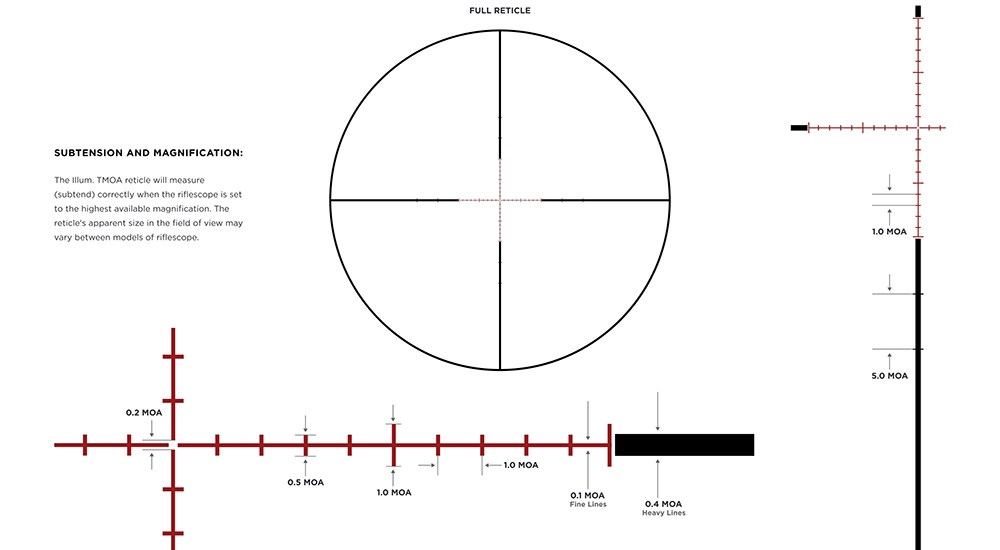 Leupold’s TMOA reticle has 1-MOA graduations which are illuminated, helping with holdover or wind correction.
Leupold’s TMOA reticle has 1-MOA graduations which are illuminated, helping with holdover or wind correction.
Leupold, however, is certainly not the only company to offer an illuminated reticle. Burris, Zeiss, Leica, Vortex, Swarovski, Skinner Sights (they make a very nice scope for lever guns) and most major manufacturers offer some sort of illuminated reticle. Configurations will vary, and illumination patterns will as well, but the basic principal remains the same. How complex or simple your illuminated reticle will be is entirely up to you.
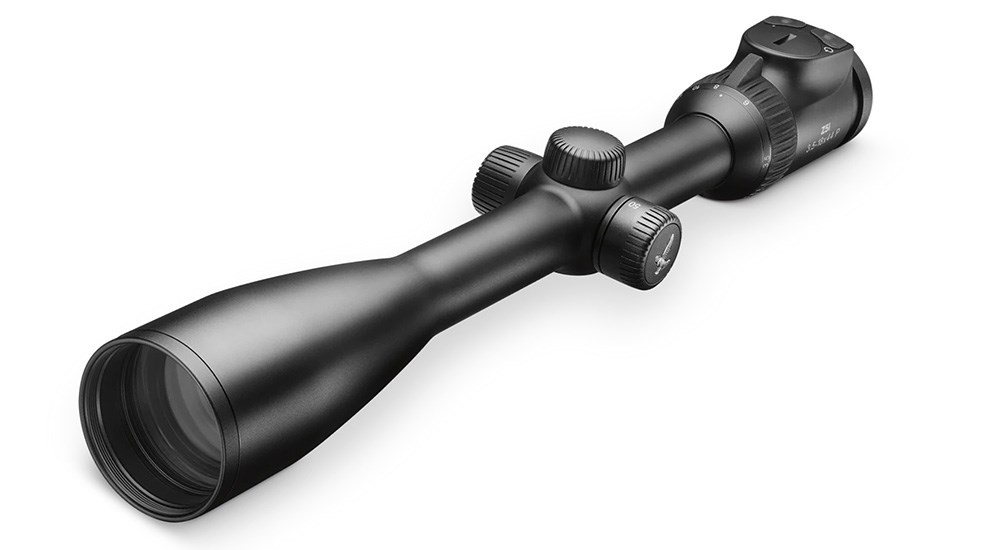 Swarovski houses their battery and reticle switch on the top of the rear ocular.
Swarovski houses their battery and reticle switch on the top of the rear ocular.
Personally, as I get older, I have come to appreciate simplicity. Years ago, I preferred a reticle with numerous holdover markings, as that was the cutting-edge technology for holdover. With the acceptance of exposed turrets for making elevation corrections, and especially with Leupold’s CDS turrets which are marked in yardage for your particular chosen load, I’ve made a marked return to a simple duplex-style reticle. Accordingly, a simple illuminated dot at the junction of the hairs is just fine by me, and the finer the better. Much like a red dot sight, I prefer a fine dot which doesn’t cover too much of the intended target, so I can best place my shot. One of the complex ‘Christmas Tree’ reticles can quickly resemble the dashboard of my old ’04 Chevy pickup—which had every warning light possible illuminated—and is just too much for my eyes.
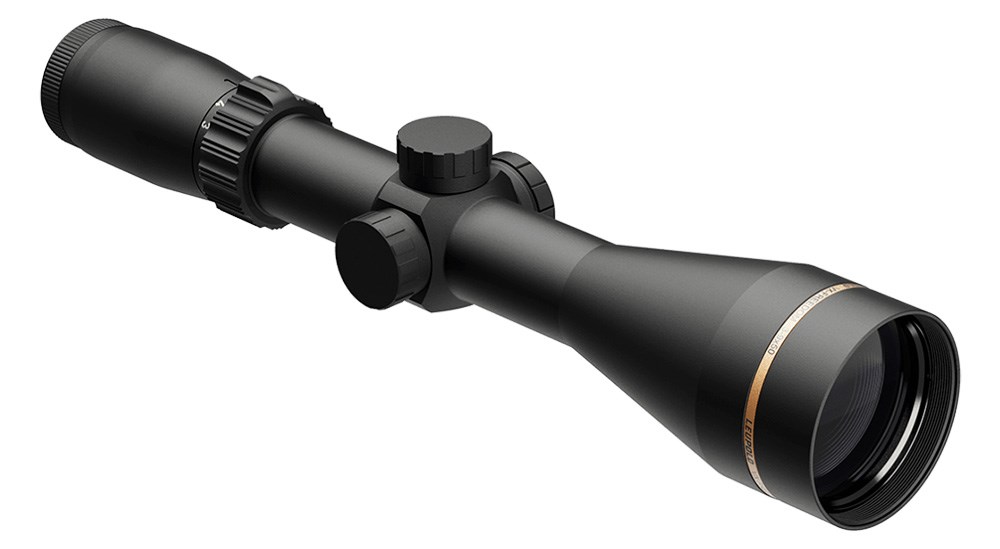 Even Leupold’s VX Freedom line—their most affordable scopes—offers the option of an illuminated reticle.
Even Leupold’s VX Freedom line—their most affordable scopes—offers the option of an illuminated reticle.
Many of the illuminated reticles have a sensor which will shut the unit off if the scope doesn’t move within an allotted amount of time, and some don’t come on until the scope (rifle) is in the shooting position. Saving battery life is a great thing, providing that the illumination comes on when you need it.
 Massaro’s leopard, recovered the following morning, was taken with the Leupold FireDot reticle in the VX-5HD 2-10x42mm scope.
Massaro’s leopard, recovered the following morning, was taken with the Leupold FireDot reticle in the VX-5HD 2-10x42mm scope.
What are the drawbacks to having an illuminated reticle? In the opinion of this author, there are none. If you don’t engage the illumination, you’ve still got a regular ol’ reticle and scope. The only addition is—usually—the on/off button located on the left side of the adjustment housing, and the battery compartment. This feature does come at an increased cost, in comparison to a non-illuminated model, but in my opinion the investment is well worth the price. Like my scenario in Zimbabwe, it may make the difference between a trophy photo and tag soup.















